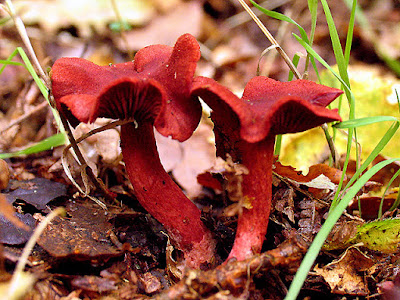Kingdom Fungi
 |
| Fungus, Mushroom credits: Copyright Pam Brophy |
MCQs for AIPMT, PreMedical, NEET
Q1: Black rust of wheat is caused by ________
(a) Puccinia
(b) Mucor
(c) Aspergillus
(d) Rhizopus
Q2: Adhesive pad of fungi enters into the host with the help of
(a) mechanical pressure and enzymes
(b) hooks and suckers
(c) softening by enzymes
(d) only by mechanical pressure
Q3: Which fungal disease spreads by seed and flowers?
(a) Corn stunt
(b) Loose smut of wheat
(c) Covered smut of barely
(d) Soft rot of potato
Q4: Zygospores are formed in
(a) Puccinia
(b) Penicillium
(c) Alternaria
(d) Rhizopus.
Q5: The thalloid body of a smile mold (Myxomycetes) is known as _________
(a) protonema
(c) mycelium
(d) Plasmodiium
Q6: Lichens are well known combination of an alga and a fungus where fungus has ______
(a) a saprophytic relationship with the alga
(b) an epiphytic relationship with the alga
(c) a parasitic relationship with the alga
(d) a symbiotic relationship with the alga
Q7: Which of the following is a smile mold?
(a) Rhizopus
(b) Pysarum
(c) Thibacillus
(d) Anabaena
Q8: Which pair of the following belongs to Basidiomycetes?
(a) Birds nest fungi and Pufballs
(b) Pufballs and Claviceps
(c) peziza and Stink horns
(d) Morchella and Mushrooms
Q9: Which of the following antibiotics is not produced by Streptomyces?
(a) Chloramphenicol
(b) Penicillin
(c) Streptomycin
(d) Tetracycline
Q10: Trichoderma harzianum has proved a useful micro-organism for _________
(a) bioremefiation of contaminated soils
(b) reclamation of wastelands
(c) gene transfer in higher plants
(d) biological control of soil-borne plant pathogens
Q11: Cellulose is the major component of cell walls of
(a) Pythium
(b) Xanthomonas
(c) Pseudomonsa
(d) Saccharomyces
Q12: Which one is the wrong pairing for the disease and its causal organism?
(a) Black rust of wheat - Puccinia graminis
(b) Late blight or potato – Alternaria solani
(c) Loose smut of wheat- Ustilago nuda
(d) Root-knot of vegetables – Meloidogyne sp.
Answers:
1: (a) Puccinia
2: (a) mechanical pressure and enzymes
3: (b) Loose smut of wheat
4: (d) Rhizopus.
5: (d) Plasmodiium
6: (d) a symbiotic relationship with the alga
7: (b) Pysarum
8: (a) Birds nest fungi and Pufballs
9: (b) Penicillin
10: (d) biological control of soil-borne plant pathogens
11: (a) Pythium
12: (a) Black rust of wheat - Puccinia graminis
This comment has been removed by the author.
ReplyDelete